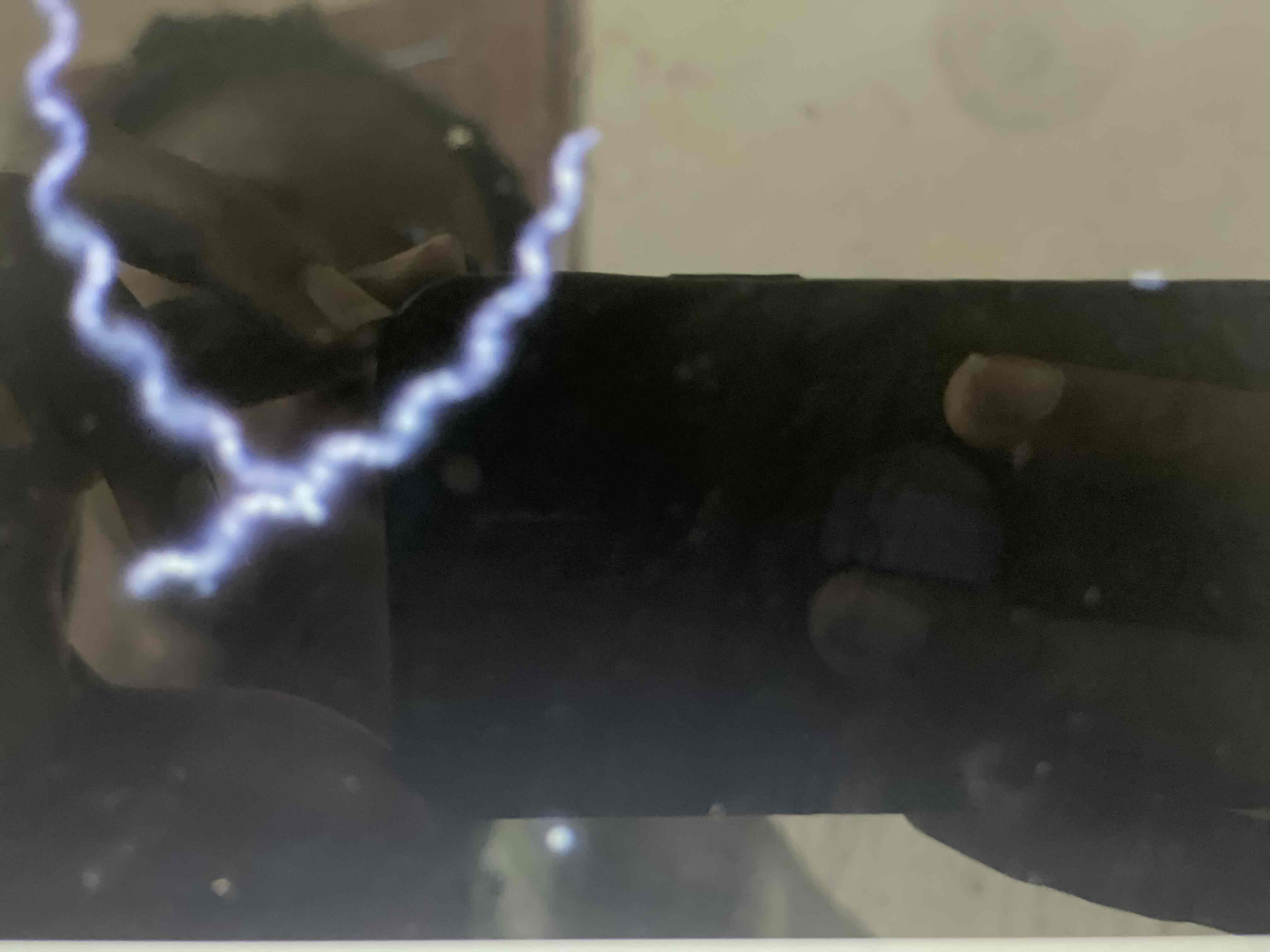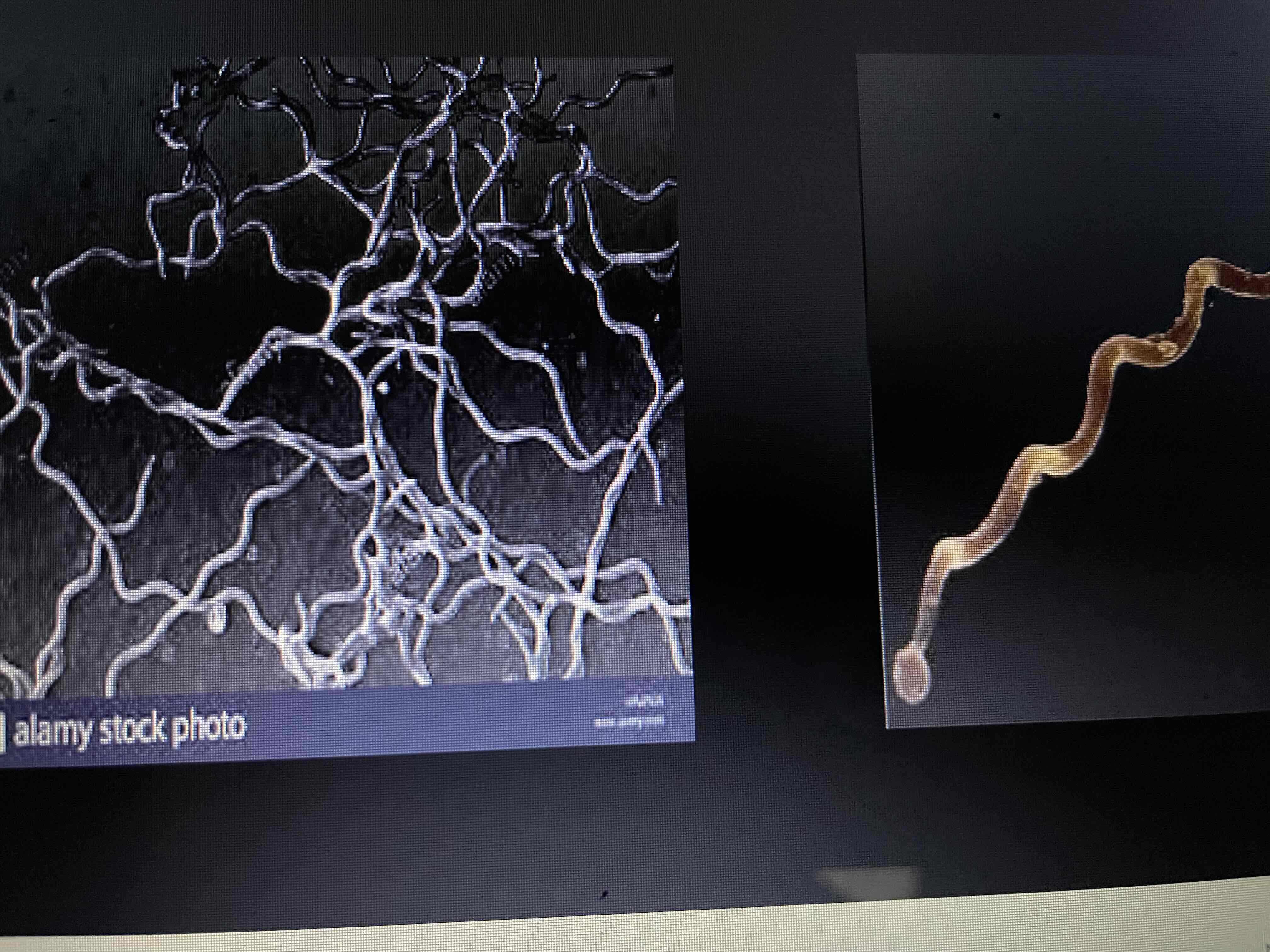Miscellaneous
1/55
There's no tags or description
Looks like no tags are added yet.
Name | Mastery | Learn | Test | Matching | Spaced |
|---|
No study sessions yet.
56 Terms
Spirochaetes characteristics
Corkscrew winding
Gram negative bacilli cell wall
Long
Slender
Double membranes
Helically curved bacilli
Spirochaetes genera (morphology)
Treponema- slender with tight coils
Borrelia- thicker with fewer and loose coils
Leptospira - resembles borrelia except hooked ends
Brachyspira- comma shaped
Treponema characteristics
Spiral
Width is less than 0.2um
Not visible on wet mount
Has G- cell wall
Pathogenic species is microaerophilic

Identify
Treponema

Identify
Borrelia
Disease caused by borrelia
Relapsing fevers
Lyme disease
Two types of relapsing fevers
Epidemic louse borne
Endemic tick borne
Epidemiology of epidemic louse borne relapsing fever
Caused by Borrelia recurrentis
Occurs in Africa and South America
Poor hygiene and sanitation
Increase with wars and conditions of social upheaval
Transmitted when pathogen from crushed lice enters broken skin/ mucous membrane
NB : B. recurrentis there is no transovarian transmission and not shed in saliva / excreta of lice
Epidemiology of endemic tick-borne relapsing fever
Caused by B.duttoni
Shed in saliva/excreta as the tick feed on host because the borrelia invades all tissues of the tick
There is transovarian transmission
Borrelia staining technique
Giemsa stain of thick and thin blood smear
Commonest serovars of L. Interogan sensu stricto
Ictohaemorrhagiae
Canicola
Pomona
NB: destroyed by extreme pH,>40 degree Celsius,dessication
General characteristics of mycoplasmas
Smallest known free living prokaryote
Ubiquitous in plants/ animals
Microbial flora (URT,GUT)
Lack cell wall
Lack peptidoglycan precursors
Lack turbidity in broth culture
Highly fastidious
Slow growing
Require microscope to visualize colonies
Most are facultative anaerobes
Family and genera of mycoplasma
Family; mycoplasmataceae
Genera: mycoplasma, ureaplasma
Major species of mycoplasmas
Mycoplasma fermentans: children/immunocompromised
Mycoplasma genitalium: 15-20% non gonococcal urethritis
Mycoplasma hominis:
Mycoplasma pneumonia:community acquired atypical pneumonia
Ureaplasma parvum:
Ureaplasma urealyticum:
Transmission of mycoplasmas
Direct contact: mother to offspring, aerosol, nosocomial acquisition through tissue transplant